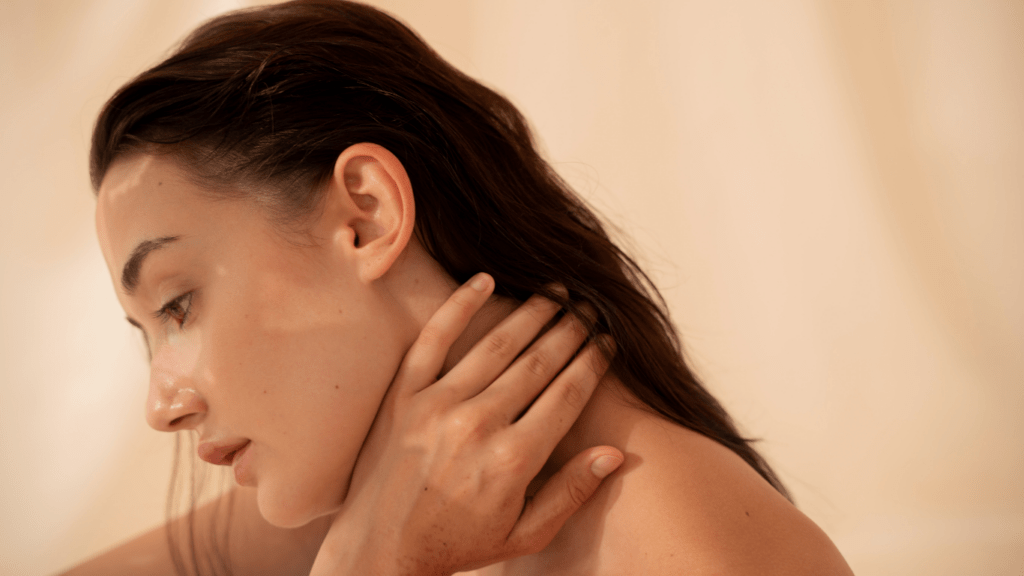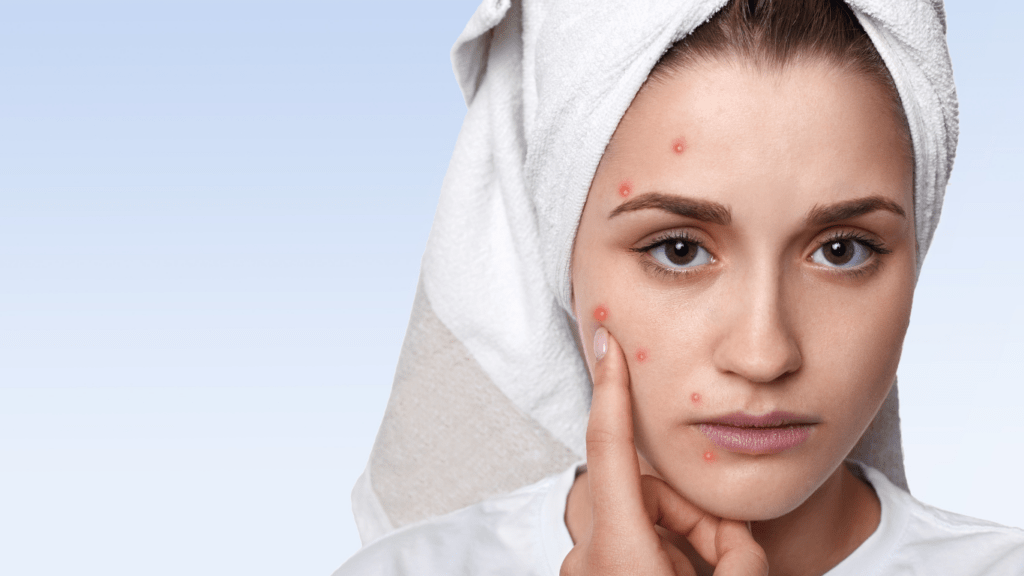The Importance Of A Simple Skincare Routine
Maintaining a simple skincare routine offers several benefits that complex routines often miss. Firstly, the skin barrier remains intact when avoiding the overuse of products with harsh chemicals. Overcomplicating routines may irritate the skin, causing breakouts or dryness.
Secondly, a simplified routine saves time. Busy schedules make it impractical to follow numerous steps every day. By sticking to cleansing and hydration, I streamline my skincare without sacrificing efficacy.
Moreover, fewer products reduce the risk of adverse reactions. Allergic reactions or sensitivity to active ingredients are less likely when I use minimal products. This also reduces costs as fewer products are needed.
Lastly, consistency becomes more achievable. A simple regimen encourages daily adherence. Routine must become second nature for long-term results. Cleanse and hydrate regularly to promote healthier, glowing skin.
A simple skincare routine protects the skin barrier, saves time, reduces risks, and promotes consistency. These benefits establish cleansing and hydration as essential steps for maintaining healthy skin.
Understanding Cleansing
Cleansing is the cornerstone of any effective skincare routine. It removes dirt, oil, and makeup, keeping the skin clear and healthy.
Types of Cleansers
Choosing the right cleanser depends on skin type and concerns. Here are some common types:
- Gel cleansers: Ideal for oily and acne-prone skin, they remove excess oil and unclog pores.
- Cream cleansers: Suitable for dry and sensitive skin, they hydrate while cleansing.
- Foam cleansers: Beneficial for combination skin, they provide a deep clean without over-drying.
- Micellar water: Perfect for all skin types, it uses micelles to lift dirt and oil without rinsing.
- Oil cleansers: Good for dry or mature skin, they dissolve makeup and impurities without stripping moisture.
Benefits of Proper Cleansing
Proper cleansing offers multiple benefits. It:
- Prevents breakouts: Removes excess oil and bacteria, reducing acne.
- Maintains healthy skin: Keeps pores clear and prevents congestion.
- Enhances product efficacy: Preps the skin, making other skincare products more effective.
- Promotes clarity: Reduces dullness and promotes a brighter complexion.
- Balances skin: Helps maintain the skin’s natural pH level and barrier.
Common Mistakes to Avoid
Avoid these common mistakes to ensure effective cleansing:
- Over-cleansing: Strips natural oils, leading to dryness and irritation.
- Using hot water: Can cause redness and inflammation. Use lukewarm water instead.
- Skipping the night routine: Allows dirt and oil to build up, causing breakouts.
- Using harsh products: Irritates the skin. Opt for gentle, suitable cleansers.
- Not rinsing thoroughly: Leaves residue that clogs pores. Ensure all cleanser is washed away.
By understanding these basics, I can optimize my skincare routine with effective cleansing methods.
Hydration: The Key To Healthy Skin
Hydration ensures skin health by maintaining its elasticity and glow. Keeping skin hydrated helps prevent dryness, dullness, and early signs of aging.
Choosing The Right Moisturizer
Selecting an appropriate moisturizer is crucial for effective hydration. Key ingredients to look for include hyaluronic acid, glycerin, and ceramides. Hyaluronic acid holds water and keeps the skin plump, while glycerin attracts moisture to the skin. Ceramides help restore the skin barrier and lock in moisture.
For oily skin, gel-based or oil-free moisturizers work best. Examples include Neutrogena Hydro Boost Water Gel and La Roche-Posay Effaclar Mat. Normal to combination skin benefits from lightweight lotions, such as CeraVe Moisturizing Lotion or Clinique Dramatically Different Moisturizing Gel. Dry skin requires heavier creams like Eucerin Advanced Repair Cream or Aquaphor Healing Ointment.
Hydration Tips For Different Skin Types
Different skin types require tailored hydration strategies. For oily skin, hydrate without clogging pores by using non-comedogenic products. Look for formulations labeled “oil-free” or “non-comedogenic.”
Dry skin benefits from layering hydration. Start with a hydrating serum containing hyaluronic acid, follow with a rich moisturizer, and seal with an occlusive like Vaseline.
Combination skin needs targeted care. Apply lighter products to oily areas and richer creams to dry patches. Also, consider using different moisturizers for different areas of the face.
Sensitive skin requires gentle, fragrance-free hydrating products. Avoid potential irritants like alcohol or synthetic fragrances. Look for products with calming ingredients, such as chamomile or aloe vera.
Hydrate from the inside out by drinking enough water daily. Aim for at least eight 8-ounce glasses, or more based on activity level and climate. This ensures overall hydration and supports the skin’s health.
Combining Cleansing And Hydration

Combining cleansing and hydration ensures effective skincare. These steps work together to maintain healthy, balanced skin.
Morning Skincare Routine
My morning routine starts with a gentle cleanser to remove overnight oils and impurities. A foam or gel cleanser works best for this purpose. After cleansing, I apply a hydrating toner to prep the skin and boost moisture absorption. It contains ingredients like hyaluronic acid. This step is crucial before applying serums or moisturizers.
Hydration comes next. I use a lightweight, non-comedogenic moisturizer suitable for my skin type. Gel-based moisturizers work well for oily skin, while a lightweight lotion benefits normal to combination skin. Lastly, I never skip sunscreen. It protects the skin from harmful UV rays and prevents premature aging.
Evening Skincare Routine
My evening routine focuses on thorough cleansing and intense hydration. I start with an oil-based cleanser to dissolve makeup and sunscreen, followed by a water-based cleanser to remove any residual impurities. This double-cleansing method ensures the skin is completely clean.
Post-cleansing, I apply a richer, more hydrating toner or essence, targeting hydration and skin repair. Night is an ideal time for serums with active ingredients like retinol or peptides, enhancing skin rejuvenation. I follow up with a heavier moisturizer, ideal for overnight hydration and repair. For dry skin, creams with ceramides and glycerin offer deep hydration.
Combining these steps in the morning and evening routines effectively supports skin health. Proper cleansing paves the way for better hydration, ensuring glowing, resilient skin.
Best Practices And Recommendations
Effective skincare relies on adopting best practices for both cleansing and hydration. Ensuring these steps are followed correctly maximizes the benefits for your skin.
Cleansing:
- Choose the Right Cleanser: Select a cleanser that suits your skin type. Gel cleansers work for oily skin, cream cleansers benefit dry skin, and micellar water suits sensitive skin.
- Cleanse Twice Daily: Cleanse your face every morning and evening to remove dirt, oil, and makeup. This helps maintain the skin’s balance.
- Use Lukewarm Water: Rinsing with lukewarm water prevents skin irritation and dryness, which extreme temperatures can cause.
- Avoid Over-Cleansing: One thorough cleansing session per use is enough. Over-cleansing strips natural oils, leading to dryness and irritation.
- Pat Dry, Don’t Rub: After cleansing, gently pat your face dry with a clean towel. Rubbing can cause irritation and micro-injuries to the skin.
Hydration:
- Identify Key Ingredients: Look for moisturizers with hyaluronic acid, glycerin, and ceramides. These ingredients provide effective hydration and barrier support.
- Tailor to Skin Type:
- Oily Skin: Use gel-based or oil-free moisturizers. For example, non-comedogenic gels keep skin hydrated without clogging pores.
- Dry Skin: Opt for heavier creams. Products with shea butter or oils lock in moisture.
- Combination Skin: Use lightweight lotions. Apply richer creams on dry areas.
- Sensitive Skin: Choose fragrance-free and hypoallergenic products. Avoid potential irritants like alcohol and parabens.
- Hydrate Inside and Out: Drink at least eight glasses of water daily to keep skin hydrated from within. Use humidifiers in dry environments to maintain moisture levels.
- Morning Routine: Start with cleansing using a gentle cleanser, follow with hydrating toner, lightweight moisturizer, and then apply sunscreen.
- Evening Routine: Begin with double cleansing, using an oil-based cleanser first, followed by a foaming or gel cleanser. Then, apply a richer toner or essence, active serums, and finish with a heavier moisturizer.
Consistency in these practices is key to maintaining healthy, glowing skin.





